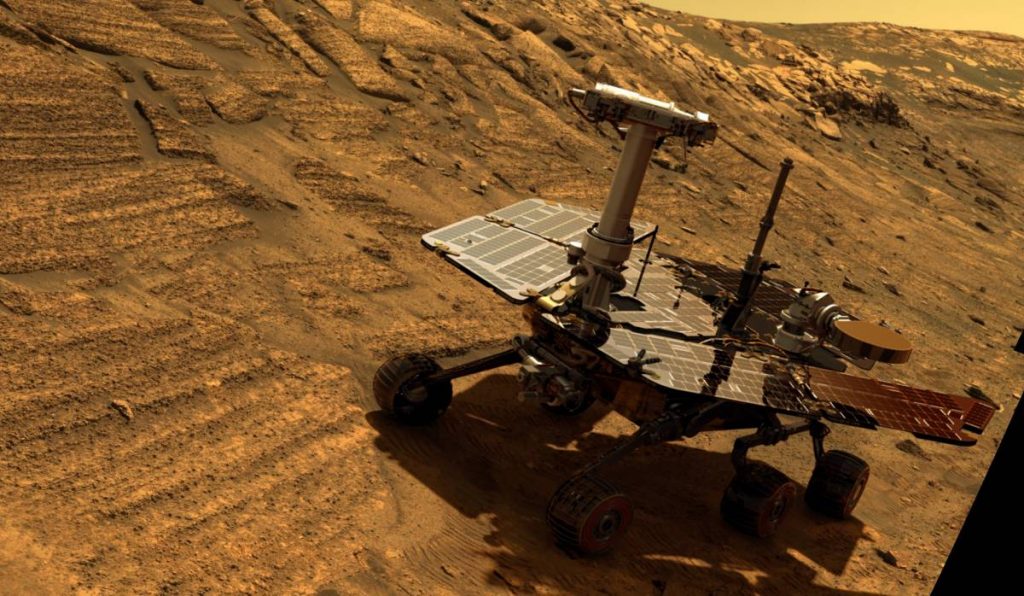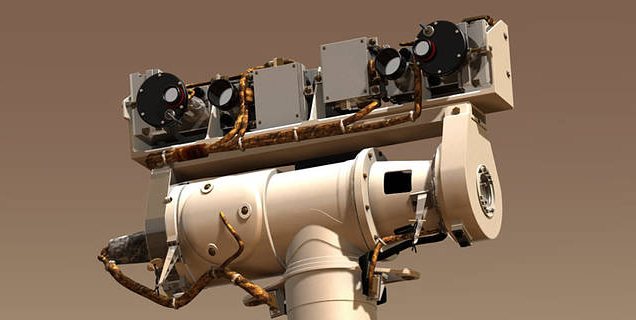
Image: NASA
All good things come to an end, and that includes the mission of the solar powered Mars rover Opportunity.
NASA announced the official end of the rover’s mission yesterday after a final attempt to contact and revive Opportunity earlier this week failed. Contact with the rover was lost in June 2018.
NASA certainly got its money worth from Opportunity – its mission was only designed to last 90 days, but went on for almost 15 years thanks in part to the robust nature of its solar power and energy storage system.
Powering the rover were solar panels expected to generate approximately 560 watt-hours a day under ideal conditions. Opportunity’s solar panels charged two 8 amp-hour lithium battery packs weighing approximately 7kg. In the early stages of the mission, the panels were generating up to 900 watt-hours a day and even just a couple of months prior to loss of communications, up to 694 watt-hours was recorded.
Opportunity went to Mars with solar and energy storage tech that although cutting edge for its time was from pre-2004, surviving temperatures that can drop to -96º Celsius at night. But it was another element of Mars weather that finally took the rover out.
The event that saw Opportunity’s demise was a planet-encircling dust storm last year. Opportunity had survived dust storms before, but the length and intensity of this event resulted in the ageing rover going into hibernation mode and never re-emerging. Previously, “wind cleaning” events had help clear the Opportunity’s panels, bringing it back to life.
Opportunity was showing its age prior to the dust storm. Accumulated battle wounds included the loss of steering on both front wheels, a stuck heater and loss of use of its 256-megabyte flash memory.
“We have made every reasonable engineering effort to try to recover Opportunity and have determined that the likelihood of receiving a signal is far too low to continue recovery efforts,” said John Callas, manager of the Mars Exploration Rover (MER) project at NASA Jet Propulsion Laboratory.
Opportunity wound up travelling 45 kilometres over the duration of its mission. This may not sound like much, but it was only designed for 1 kilometre. The rover was accompanied by a twin, Spirit, which was active until 2010. Among their important discoveries was finding evidence that Mars once hosted large bodies of liquid water.
Opportunity’s final resting place is Perseverance Valley – a fitting spot to rust in peace1. Spirit is located on the north face of the Troy plateau.
Spirit and Opportunity are not alone on the planet. The (nuclear powered) Curiosity rover has been going about its business for six years and the solar powered InSight lander touched down on the red planet on November 26, successfully unfurling its solar panels just hours later. InSight is currently preparing to carry out its work.
It’s hard to believe all this activity is happening so many millions of kilometres away. What’s not so hard to believe is that wherever we go, we leave busted stuff behind. Still, it’s all in the name of science.
Spirit, Opportunity, Insight and Curiosity will be joined by another rover in the Mars 2020 mission. While that rover will be nuclear powered, it will be accompanied by a solar powered helicopter drone.
Footnotes
- I’m not sure if stuff can still rust on Mars, or if Opportunity has any components that could ↩


 RSS - Posts
RSS - Posts



Farewell Opportunity… if only it had found some water so that it could give the panels a quck spritz…!